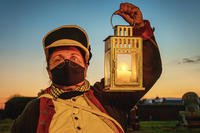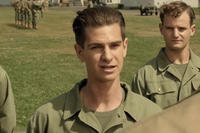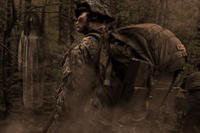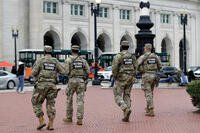“Die Hard” has a lot more to do with military history than you might think. This is true for both the phrase and the movie. The book on which the 1988 movie “Die Hard” is based is called “Nothing Lasts Forever,” and our hero is Joe Leland. Leland is still a New York police officer, but he’s also a World War II Army Air Forces veteran with an ax to grind.
As for the phrase “Die Hard,” it goes much further back in military history than World War II, but its origin is no less awesome. The first person ever to tell his men to “die hard” was British Lt. Col. William Inglis of the 57th Regiment of Foot, and he shouted it to encourage them after taking an artillery round and defending the regimental colors.
It happened at the Battle of Albuera in Spain in 1811. It featured two military heavyweights in the prime of their careers: a Coalition force under Sir Arthur Wellesley, later known as the 1st Duke of Wellington, and the French forces of Napoleon Bonaparte.

The allied forces of British, Spanish and Portuguese troops were fighting for control of the Iberian Peninsula after Napoleon had installed his brother, Joseph Bonaparte, on the throne of Spain. The two sides fought from 1808 until Napoleon’s abdication in 1814.
At Albuera, one of Napoleon’s marshals, Andre Massena, was being slowly ground down by Wellington’s Coalition force. The French emperor ordered a relief expedition to relieve Massena. By the time it arrived, Massena’s troops were already retreating toward friendly territory. All the relief force could do was capture the nearby fortress of Badajoz.
The French were soon forced to move almost all of their troops from Portugal, and Wellington saw the opportunity to keep the French out for good by capturing the fortress for the Allied Coalition once more.
With Badajoz under siege, French Marshal Nicolas Soult gathered a substantial force to relieve the siege of the fortress and kick Wellington’s commander in the teeth. What Soult didn’t know is that the army he was attacking was much bigger than expected. Instead of attacking an army of equal size, roughly 24,000 men, the Coalition force was 35,000 strong.
The French Army attempted to flank the Coalition force. It nearly worked, despite the size of the opposing force. The Coalition expected a frontal assault and almost crumbled when the French unexpectedly hit the right side of their lines. The Spanish on that end of the line held, saving the army from destruction.
Inglis and his 57th Regiment of Foot, along with two other battalions, were sent to the Coalition right flank to bolster the Spanish defenses. In the fighting of this war, volume of fire usually decided the winner, so the French not only brought every infantryman they could manage, they also brought their artillery, firing grape and canister shot, the cannon equivalent of a shotgun shell.
The British troops advancing to hold the line were caught in a crossfire, shooting at the infantry in front of them but taking an enfilade of canister and grapeshot. Inglis was wounded by canister shot early on in the engagement, but he refused to be evacuated. He stayed with the regiment’s colors and repeatedly shouted at his men to “die hard” in the face of French fire.

Despite the success of his surprise attack, Soult was forced to retreat in the face of superior numbers. Both sides were badly mauled in the fighting, but the Coalition continued the siege of the Badajoz fortress. Ultimately, it came to nothing because the French would return before they could take the fortress.
In the end, the Battle of Albuera meant very little to the struggle over control of Spain and Portugal, but gave the world an immortal expression of steadfast determination that would not be succeeded until Roy Rogers gave us “yippie-ki-yay.”
-- Blake Stilwell can be reached at blake.stilwell@military.com. He can also be found on Twitter @blakestilwell or on Facebook.
Want to Learn More About Military Life?
Whether you're thinking of joining the military, looking for post-military careers or keeping up with military life and benefits, Military.com has you covered. Subscribe to Military.com to have military news, updates and resources delivered directly to your inbox.















